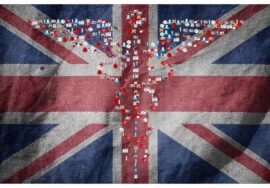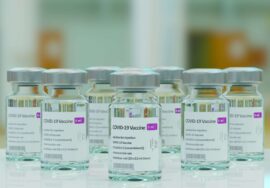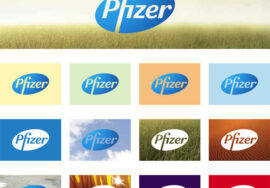
Pharmaceutical Industry Reputation Post-COVID
The modern Pharma industry has long had issues around “reputation” and much of the criticism has often centred on drug pricing. Commercial organisations developing and selling life changing and life-saving products are held to a different standard to other companies. If a technology firm decides to launch their new smartphone at an exorbitant price, in part to recoup money spent developing the product over many years, no great moral outrage ensues. The market will judge the worth of the phone which may subsequently either not sell or be reduced in price. Nobody dies because they don’t have the latest smartphone. The same cannot be said for pharmaceuticals. However, most large drug companies are subject to the same financial reporting pressures as any other publicly quoted firm. In the world of high finance they are held to the same standard as, say, the tech industry. No matter how much the drug industry prides itself on improving the health of society, there is no escaping the fact that the ultimate raison d’etre of ‘Pharma’ over past years has been to maximise profits and shareholder value.
Reputation is hugely important to all firms, particularly today, as the percentage of a company’s value attributable to intangible (as opposed to tangible) assets increases. Some estimate that up to 75% of a company’s market capitalisation is now made up of intangible assets such as reputation, rights and IP (Forbes 2010).
Various surveys assessing the attitudes of key stake holders towards the global Pharma industry exist, but one of the most comprehensive and independent assessments of corporate reputation is conducted by Patient View. In April, the results of the 2020 survey (conducted between Nov2020 and Feb 2021) were published and provide a valuable insight into how the global COVID pandemic, and industries’ response to it, have impacted on reputation. Results showed that 50% of all respondents thought that the industry, as a whole, has an “Excellent” or “Good” corporate reputation. This is the highest score since the inception of the survey 10 years ago and compares favourably to a low of 34% in 2012. Positive feedback around industry response to COVID, through the rapid development of highly effective vaccines, is clearly at the heart of this shift. Other surveys have shown a similar trend: a Harris Poll study earlier this year in the US found 62% rated the pharma industry as a 5, 6 or 7 on a 7-point scale, with 1 equating to “very bad” and 7 to “very good”- an increase of 30 percentage points since January 2020, pre-pandemic.
The ‘halo effect’ resulting from COVID may, however, be short-lived. Pfizer was viewed particularly favourably in the Patient View survey, for obvious reasons, but concerns around profiteering from the pandemic are already being voiced Although pricing for the Pfizer vaccine, at around $15-$20 per dose is significantly lower than would generally be charged for a brand new on-patent vaccine the company has never promised to offer its jab at cost price. In fact, whilst Pfizer has been coy about disclosing the exact profits garnered from its COVID vaccine, it did bring in $8billion in revenue during the first half of 2021. Based on previous predictions from Pfizer that margins would be in the high 20% range, it’s easy to see the financial benefits COVID bring to the company. Set this against the fact that much of the background research behind the BioNTech / Pfizer mRNA vaccine was supported by the public purse (German government, NIH) and all of the familiar accusations levelled at the industry start to the raise their head.
AstraZeneca (AZ) on the other hand, partly because of the contract signed with Oxford University, has agreed to supply its vaccine at cost price (until the pandemic is over) and at around $2-5 per dose it is the cheapest of the main COVID vaccines. Whilst one would imagine that such a seemingly altruistic move would have immeasurably improved the company’s reputational stock, AZ have been beset with criticisms from multiple angles during the course of the last 12 months- much of it somewhat unjustified. Most frustratingly for them were associations between administration of the job and blood clots, an issue blown out of proportion by regulators and the media alike. However, some of the criticism around the potential future pricing of the AZ vaccine opens up a much wider debate around how innovation in Pharma is funded and paid for. AZ reserve the right to decide themselves “when the pandemic the over”- at which point they are free to raise their vaccine’s price (except in the developing world where they have promised a continual supply at cost price in perpetuity). Questions then arise as to when the pandemic can justifiably be regarded as ‘over’; what the price will increase to; and which countries are on AZ’s ‘developing world’ list. This will bring the conversation back to how much of the development costs for AZ’s jab came from the public purse. Some estimates have put this as high as 97%. Although that number might be contested by AZ, government involvement in accelerating COVID vaccine development brings an old debate back on the agenda. Before signing an exclusive licence with AZ, Oxford University had considered options for offering non-exclusive, royalty-free licences (to support free of charge, at-cost or cost + limited margin supply of their vaccine) for the “duration of the pandemic- as defined by the WHO”. Many would argue that such an approach would provide proof that Pharma innovation can successfully be driven in the public sector and licensed for manufacture and sale to multiple companies at low cost.
The Pharma industry deserves considerable credit for its role in managing us out of this pandemic and revenue from COVID vaccines adding to their bottom line in the medium and longer term seems fair. However, nobody is going to be comfortable with excessive profiteering as we navigate out of this crisis, and there needs to be better management of the ‘conversation’ around side effects and efficacy- easier said than done in the social media age.








